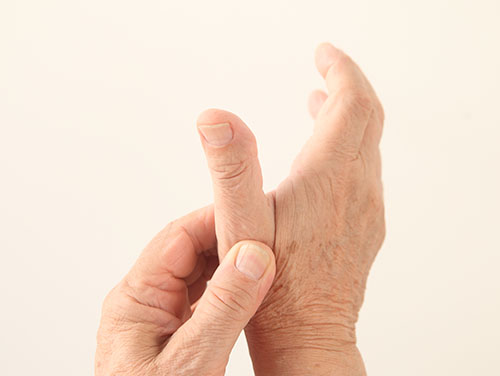| What is De Quervain's Tenosynovitis?14 August 2017 If you are experiencing pain and tenderness at the base of your thumb, you may be suffering from De Quervain's Tenosynovitis. While rather harmless and easily treatable, this condition can be very unpleasant and limit your everyday activities, so it is best to start dealing with it as early as possible. With our short guide on WristSupports.co.uk, you can learn about the symptoms of De Quervain's Tenosynovitis, discover if you are at risk of developing it and find the best treatment possible. What is De Quervain's Tenosynovitis?De Quervain's Tenosynovitis is an inflammation of the tendons on the thumb side of the wrist and occurs when the two tendons, the extensor pollicis brevis and the abductor pollicis longus tendons, become swollen, which puts pressure on the nearby nerves, causing pain and numbness.
How Do I Recognise De Quervain's Tenosynovitis?De Quervain's Tenosynovitis affects the base of your thumb, causing pain and swelling. Some of the most common symptoms include:
What Causes De Quervain's Tenosynovitis? The condition often appears without an obvious cause, yet it is often associated with chronic overuse of your wrist. Most common risk factors includes:
Treating De Quervain's TenosynovitisDe Quervain's Tenosynovitis is usually not dangerous, but can be a rather unpleasant and painful experience. With mild cases it is enough to simply avoid activities that cause pain, while more serious instances may require steroid injections, which relieve pain in around 70% of cases, or even surgery. Most cases, however, can be successfully treated by wearing a wrist/thumb splint or brace that helps immobilise the thumb and the wrist, alleviating the pain and speeding up the recovery. Check our broad range of Wrist Supports for De Quervain's Tenosynovitis to find the right brace for you. Do you have a question to ask or something to add? Why not leave us a comment below or find us on Facebook or Twitter. |
FREE UK DELIVERYon orders of £40 and over. EXPERT CUSTOMER SUPPORTRead our reviews. EASY PRODUCT RETURNSwith our 30 day returns policy. |

